By Rochelle Hawthorne, MPNA, MS, LPC, FF/EMT-P, MnFIRE Peer Support Program Director
Sometimes when you are having a tough day, it’s nice to talk about what’s troubling you with someone who innately understands your perspective. It can be especially helpful when you are carrying the unique stresses that come with being part of the fire service.
MnFIRE’s Peer Support Team is comprised of fellow Minnesota fire service community members who are available to lend a listening ear and offer support to those who may be struggling at the fire station, on calls, at home and beyond. It’s completely confidential, an unlimited resource and available 24/7 – on the days when you feel like you’ve reached your limit, and any other time.
Here are some of the key benefits when utilizing peer support:
Mental health and emotional well-being
- Early intervention: Sometimes firefighters are more likely to open up to peers than external professionals, allowing earlier detection of mental health issues like PTSD/PTSI, depression, or anxiety.
- Reduced stigma: Talking with peers can normalize mental health struggles, helping to dismantle the “tough it out” culture.
- Improved coping mechanisms: Peers can share practical tools and experiences for managing stress and trauma.
Increased trust and camaraderie
- Shared experiences: Support may be best coming from someone who has “been there,” which builds credibility and deepens trust.
- Team cohesion: Encouraging open dialogue improves unit morale, cooperation and interpersonal relationships.
Resilience building
- Stronger stress management: Ongoing support increases emotional resilience, helping firefighters bounce back from difficult calls or prolonged stress.
- Prevention of burnout: Regular peer check-ins can reduce the emotional toll that leads to fatigue or job dissatisfaction.
Crisis response and recovery
- Support after critical incidents: Peer teams can assist in debriefings or defusings following traumatic events, helping reduce long-term psychological harm.
- Suicide prevention: By identifying warning signs and offering immediate peer-level help, these programs can be lifesaving.
Enhanced organizational culture
- Promotes a culture of care: When leadership supports peer programs, it signals that firefighter wellness is a priority.
- Reduces absenteeism and turnover: Healthier firefighters are more likely to stay in the job and maintain consistent performance.
Accessibility and continuity
- Available anytime: Peer supporters can be embedded within shifts or departments or can be confidentially reached by a simple phone call, providing immediate and ongoing support.
- Bridge to professional help: Peer teams can refer individuals to clinicians when needed, ensuring a continuum of care.
The MnFIRE Peer Support Program matches firefighters and family members with trained peer supporters who have a similar background – from rank to size and type of department– and know firsthand the stressors firefighters face, both on and off the job. To access MnFIRE Peer Support, contact 888-784-6634 at any time and select option 2.

